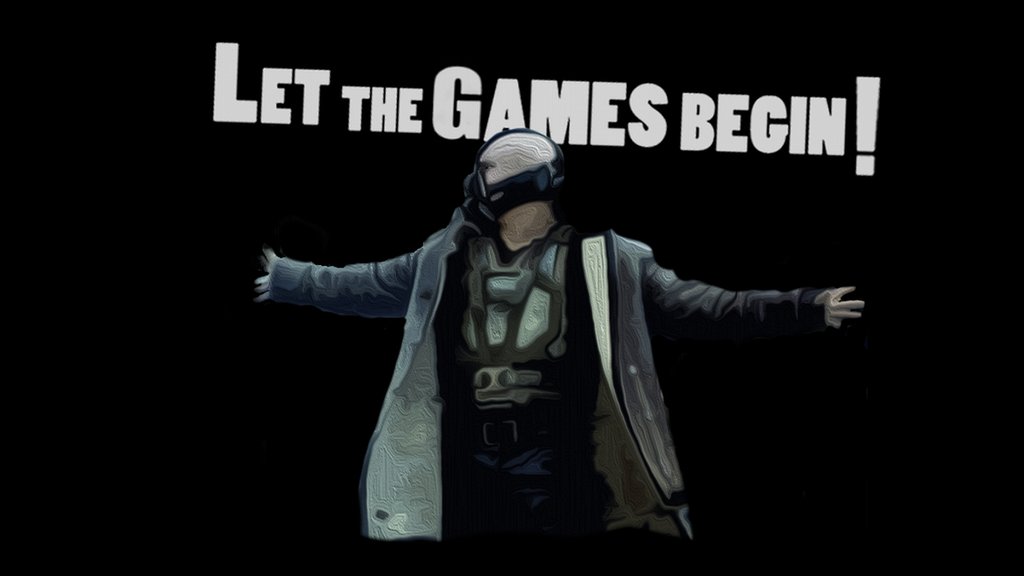Why I’m a Trainer
Whether I shall turn out to be the hero of my own life, or whether that station will be held by anybody else, these pages must show. —Charles Dickens, David Copperfield (1850)
My wife undoubtedly thinks I’m crazy. This is not a new fact for many people who know us, but just an affirmation of fact. She’s had the mixed fortune to deal with me for the better part of her twenties, and in the entire time she’s known me, she’s witnessed my work habits, as they were. She’s woken up at ungodly hours without personal need in order to drive me to work in our one car. She’s come to pick me up from work in the late evening during snow storms, and sat patiently while I worked on client programs, emails, articles, and the like after getting home and having something to eat.
Behind every successful man is an amazing woman. This is always true.
For the past 10 years, I’ve worked as a personal trainer in a commercial facility in Edmonton, Alberta Canada, one of the coldest and most unforgiving landscapes in the world. There’s been good times, bad times, frustrating times, and none of this is any different from any other type of job out there. The job is essentially a commission based job, where payment is rendered on the completion of a paid session with a client. There is no salary, no base wage, and no guaranteed income. I remember when I started working a co-worker and I would joke with each other “so, how much are you making this month?” and the answer which was both hilarious and terrifying was simply a shrug of the shoulders. It could be $500 or $10,000, or anywhere in between.
The hours were, and still are, inconsistent. Such is the joy of working around the schedules of those who work full time jobs. A typical morning starts at 6am, already showered, shaved (occasionally), fed, and ready to bring the thunder. When I started the day would end at 9pm, hopefully with the same level of energy I was able to give to my 6 or 7am clients. If it was a busy day, I would have 10 clients, and if not I would have 2. Then there were the unpaid hours after work preparing for the next day.
After grinding for a few years and working up a good-sized clientele, as well as increasing my income per session to a liveable level, I was able to reduce my hours somewhat, down to only 12 a day. From there, I started taking Thursdays off to allow a mid-week break, and to catch up on things like programs, errands, and all the things that go on with daily life.
The cool thing about training is that there’s a science to it, but it’s essentially like playing all day long. You lift stuff, throw stuff, stretch stuff, move other stuff, and generally have fun for the most part. I tend to try to go over the top when training clients to get them hyped up for some sets. Clapping, yelling, singing (off key) making up rhymes about abs and anything I can do to get them to laugh, have more fun, or push harder is usually my go-to. At the end of the day, I can leave feeling like I’m tired, but that I made a difference in someone’s life.
When I started training, I had more of a football and bodybuilding mindset about everything, which served me well until it didn’t. I started to realize that a lot of the people coming in to see me had some sort of injury or medical issue that would prevent them from following a typical strength or hypertrophy program, and that I had to start thinking differently about how I could help them. These defining moments helped me to chase different rabbits down different holes, so to speak, and started my self-directed learning into movement principles, corrective exercises, neurophysiology, and rehabilitative sciences so I could use what I could to help more people. Along the way I figured out some of the things I could do for someone to help them get through injuries, while also feeling like they were training at a high level.
I remember working with one client who was in a really bad car accident and essentially shattered his one leg. He had to have his tibia rebuilt almost entirely from a section of his pelvis and rib, had multiple skin grafts, a fused ankle, required a solid form boot, and had a lot of rotational issues and spinal dysfunctions. He also had multiple skin and muscle grafts, essentially lost 2/3rd of his lat and pec on one side, and couldn’t raise his hands over his head. So immediately, he couldn’t do any of the following:
- squats
- deadlifts
- lunges
- single leg work
- hip rotation work
- spine flexion, rotation greater than 20 degrees, or lateral flexion
- pressing movements
- overhead movements
In spite of being one of the hardest working clients I’ve ever worked with, he was also one of my most challenging clients to work with for the above mentioned reasons. The good thing is, while his structure was remarkably different from the average gym-goer, what he had left still followed the same rules of adaptation in the presence of appropriate stimulation, so I was able to expand my concept of what was possible and what constituted a workout. The same lessons I gleaned from working with him have been used to refine what I do with each client, and how I approach teaching others.
Small victories like these are the main reason why I train clients. Take for example, my wife. She’s a competitive triathlete and avid road cyclist, which means weight training is a secondary concern used to increase her power output and stability. Doing high reps sets are pretty useless for her since she can rock out a 2 hour bike, and a 15-20 rep set doesn’t come close to approximating the events she’s training for, nor does it provide much benefits to her performance.
Pulling a heavy-ass deadlift does.
This is a weight equal to 1.65 times her body weight, and is more amazing considering the fact that she had a massive SI joint injury when we first met that became aggravated through her training, required intensive prolotherapy injections into the ligaments of her spine to stiffen them up, time off the run and bike for over a year, many painful days, and more than a few tears. In spite of all this, her goal of a 2 times body weight deadlift by the beginning of race season is probably going to happen.
Stuff like this get me charged up.
How about my distance training client who had his first experience with higher volume hip thrusts, and in turn made cinematic gold?
These kinds of things are awesome, but so are things like the client with cerebral palsy who was able to start running after being told they would never be able to for their entire life. So was the client who couldn’t raise their arm past their shoulder following stage 4 breast cancer surgery and 17 reconstructive surgeries being able to press a 12 kg kettlebell overhead. So are the 2 or 3 dozen clients who worked office job that they absolutely hated who decided to take a personal training certification after working with me. So is the client who had some hip issues preventing her from competing and who is now in Sochi on team Canada. So is the para-athlete who works his butt off in the gym every day, in spite of a neural disorder that prevents him from using anything below the knee.
For all of these reasons and every other client I work with, I started teaching workshops with other trainers whom I worked with, began writing this here blog, and started writing for other publications so I could hopefully influence the health and fitness of others outside of my geographical reach.
Let’s say I teach a workshop with 20 trainers in attendance. Each trainer works with 20 clients. This means while I’m able to impart some benefit to the 20 trainers, I can also help them get results for their 20 respective clients, which means I’ve had an impact on 420 people. A blog post gets read by 1000 people, of which 100 are trainers, and they can then influence their collective 2000 clients, making the influence of that post reaching close to 3000 people. If I write an article for a major publication that reaches 1 million people, and they don’t gloss over it to see pictures of hot chicks in bikinis, I’ll hope to have an influence on them as well.
The most influence is obviously with those I work with directly, but sometimes all it takes is a spark of inspiration to see a massive change initiate in someone. For these reasons, and for many more, my wife will have to continue to get up at ungodly hours to drive me to work (at least until we get a second car), continue to deal with me spending hours on programs and emails, and set new PRs in her deadlift while getting her back stronger and healthier.
Why? Because this kind of stuff drives me. It makes me look forward to each day. I can’t wait to help someone do something they thought was never going to happen, all with less effort than they though necessary.
Because it makes me happy


8 Responses to Why I’m a Trainer